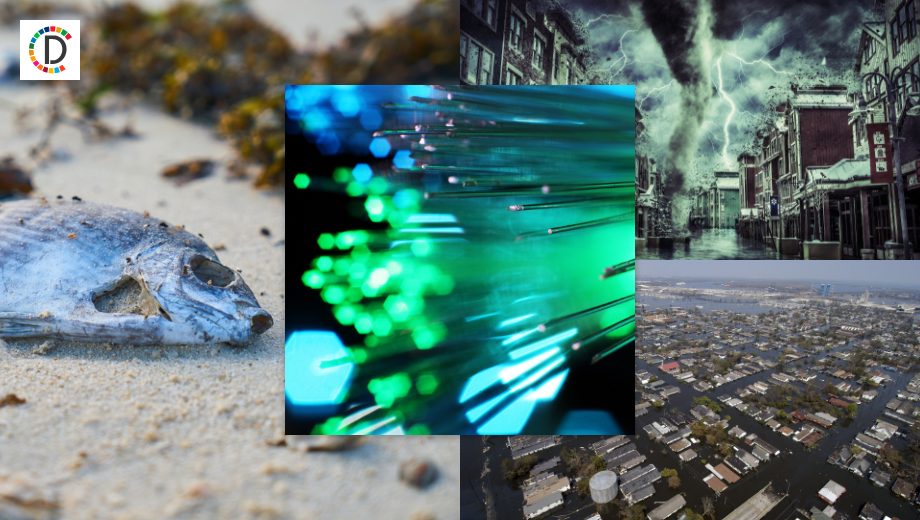Tornado pummels Arkansas capital, injuring 24 people
The University of Arkansas for Medical Sciences hospital, the region's only major trauma center, declared a level-1 mass casualty alert after the tornado struck Little Rock, the state's capital and most populous city, at mid-afternoon. No deaths were reported from the twister, spawned by one of a number of thunderstorms sweeping a vast swath of the U.S. heartland as part of a much larger expanse of extreme spring weather.

A fierce tornado blasted through Little Rock, Arkansas, and adjacent towns on Friday, ripping away roofs and walls from many buildings, flipping over vehicles, and leaving at least two dozen people hospitalized. The University of Arkansas for Medical Sciences hospital, the region's only major trauma center, declared a level-1 mass casualty alert after the tornado struck Little Rock, the state's capital and most populous city, at mid-afternoon.
No deaths were reported from the twister, spawned by one of a number of thunderstorms sweeping a vast swath of the U.S. heartland as part of a much larger expanse of extreme spring weather. "At this time, we know of 24 people who have been hospitalized at Little Rock hospitals and we are not aware of any fatalities in Little Rock," Mayor Frank Scott Jr. said on Twitter.
He said property damage was "extensive," though the full scale of devastation remained unclear. "We're operating in red status, with all hands on deck," said Aaron Gilkey, spokesperson for the Metropolitan Emergency Medical Services (MEMS) agency.
Aerial footage posted by The Weather Channel showed a heavily damaged area of the city spanning several blocks with numerous homes missing roofs and walls, some of them collapsed, and overturned vehicles littering streets. Local media reported that adjacent communities, including North Little Rock just across the Arkansas River and Jacksonville, also sustained heavy damage. KATV posted an image of a heavily damaged high school in the town of Wynne.
The turbulent weather came one week after a previous swarm of thunderstorms unleashed a deadly tornado that devastated the Mississippi town of Rolling Fork, destroying many of the community's 400 homes and killing 26 people. CLOSE CALL IN NAIL SALON
Video shot on Friday from a window in a Baptist Health facility and verified by Reuters showed a towering, swirling black column of air, moisture and dust plowing slowly through the landscape in the near distance. One woman recounted in a live interview aired by KATV that she was visiting a salon to have her nails done when she looked out the window and saw leaves swirling moments before the building's roof was torn off.
She and others in the shop took cover in a back room as the twister struck and emerged to find the ceiling gone, said the woman, who seemed unhurt. Little Rock mayor Scott Jr. said on Twitter that he had asked Arkansas Governor Sarah Huckabee Sanders to mobilize National Guard troops to assist in the emergency response.
Sanders signed an executive order to immediately authorize $250,000 from the state disaster response and recovery fund, a local reporter tweeted. The twister struck as an immense blast of extreme spring weather swept much of the United States, menacing the nation's midsection from Texas to the Great Lakes with dangerous thunderstorms and tornadoes.
The National Weather Service was tracking more than two dozen unconfirmed tornado reports, mostly in Arkansas and Iowa. Tens of millions of Americans across the Great Plains, Midwest, South and East were under warnings and advisories for various weather hazards on Friday evening and into the weekend, the NWS said.
Besides Arkansas, southern Missouri, western Kentucky and western Tennessee were deemed at greatest risk of severe thunderstorms capable of producing violent tornadoes, large hail and damaging winds, the weather service said. The northern, colder edge of the storm system, stretching from the High Plains to the upper Great Lakes, was expected to bring heavy snow, combining with winds gusting up to 50 miles per hour (80 kph) to create blizzard conditions.
Somewhere in the middle, arching across parts of several states, was a swath of the northern Midwest expected to be besieged by intense ice storms, with freezing rain wreaking havoc on roads and power lines. Meanwhile, the southwestern flank of the system featured gusty conditions and low humidity, which combined could pose a heightened threat of wildfires.
(This story has not been edited by Devdiscourse staff and is auto-generated from a syndicated feed.)










